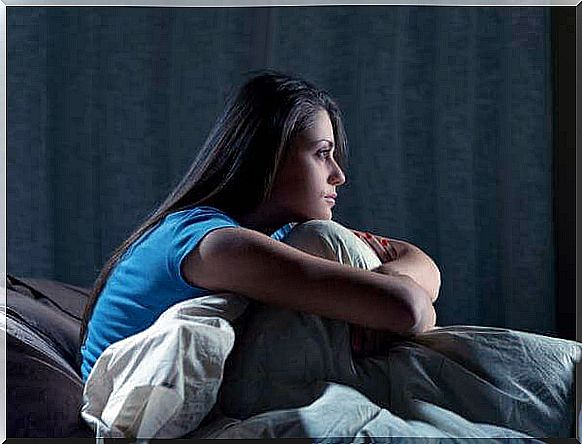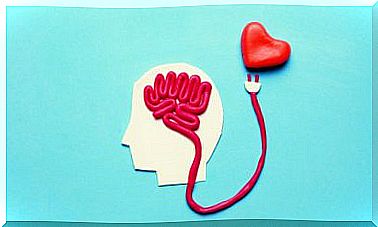Dysomnias, What Are They And How Do They Affect Us?

Dysomnias are specific sleep disorders that cannot be explained by an underlying medical condition. We have all experienced some of its symptoms to some degree, reminding us how important it is to have a good quality of sleep.
Sleep is such a basic need that poor sleep has been associated with poorer cognitive performance. Today, our lifestyle has led to the proliferation of sleep disorders, moving up the scale of reasons for consultation.

Dysomnias: more than a bad rest
Primary sleep disorders are defined as those that are not caused by a medical illness. Thus, these disorders are characterized by the involvement of :
- Sleep initiation: Disorders such as insomnia, where patients cannot get to sleep properly.
- Sleep maintenance: Disorders characterized by the inability to remain asleep, presenting intermittent awakenings.
- Excess sleep: When excessive sleep disorders such as hypersomnia occur.
In addition, dysomnias share a classification with parasomnias, altered sleep states characterized by a worsening of the quality and quantity of rest.
In summary, within the dysomnias those sleep disorders of psychological cause are classified.
Types of dysomnias
Dysomnias is one of the most extensive categories, encompassing a good variety of problems.
When the psychological, environmental and organic factors potentially harmful to rest appear, problems in the duration and quality of sleep can be expressed in several ways. We can stand out:
- Sleep initiation and maintenance disorders.
- Sleep quality and quantity disorders.
Sleep onset and maintenance dysomnias
Among these disorders, the most common and named is insomnia. In short, these types of alterations are based on difficulty falling asleep, a general inability to properly maintain sleep or a combination of both.
They are especially serious when they are not treated and produce a negative effect that accumulates in the daily life of the patient. Among the most recurrent we can highlight:
- Insomnia. A state of psychological and physiological activation that prevents sleep. Despite the individual’s motivation to fall asleep, his body cannot relax into the desired state.
- Intermittent awakenings or shallow sleep. This type of alteration consists of an inability to achieve deep sleep states. It is in slow wave sleep (NREM), where sleep has a restorative effect. When this state is not reached, the subject usually presents a state of daytime sleepiness.
Sleep quality and quantity dysomnias
Here most parasomnias such as sleepwalking or sleep paralysis overlap. Quality and quantity alterations occur when a subject sleeps less than normal or in excess, a poor quality of sleep usually coexisting.
Hypersomnia, for example, consists of excessive and outdated sleep, which does not have a positive impact on the subject.
Circadian rhythm disturbances
Dysomnias as such represent a circadian rhythm mismatch. This basic biological cycle, generally 24 hours, is in charge of telling us when and how to sleep through the synthesis of external markers, such as light or temperature.
Alterations, such as jet lag , are an example that when sleep cycles are disturbed, subjects suffer a transitory state of general maladjustment in most of their functions.
How are dysomnias detected?
The symptoms begin to appear in an underhanded way, we are all used to having a bad night. The problem is when the situation repeats itself and the symptoms leave increasingly disabling sequelae.
Our nervous system tries to adapt to the situation, and once it gets used to this malfunction, patients find themselves in a vicious circle that is difficult to break.
The people closest to the patients are often the ones who report these problems. A bad rest translates into an impoverishment of daily functioning. Thus, it is recommended:
- Act fast. Once the first symptoms of deterioration appear, access a specialist.
- Referral to a specialist. General practitioners are often the first filter at the primary level of care. Depending on the cause of the alteration, a psychologist, neurologist or specialist in respiratory function will be referred, among others.
- Detection tools. The main screening tests are the clinical interview, standardized psychometric tests, such as the daytime sleepiness test, and polysomnographic studies.

Treatment of dysomnias
First, treatment will vary according to the etiology of the disorder. Behavioral response to stimulus modification therapies are usually recommended.
But the fundamental basis of any intervention is psychoeducation, the starting point of good sleep hygiene, where risk factors are avoided, such as excessive consumption of stimulants and stressful situations before going to bed.
It is important to clarify that dysomnias can coexist with other organic problems. Hence, in many cases the psychologist is not the main professional in the intervention or the synchronized work of a group of professionals is needed.
Many people tend to ignore their body’s signals; among the most common, the lack of quality rest. Since we have mechanisms to avoid its immediate consequences, such as the consumption of coffee or medications, the symptoms often cause the person to seek help in the early stages.
On the other hand, once the body gets used to working like this, it is very difficult to go back. For this reason, early care is the best condition for the success of any intervention.









